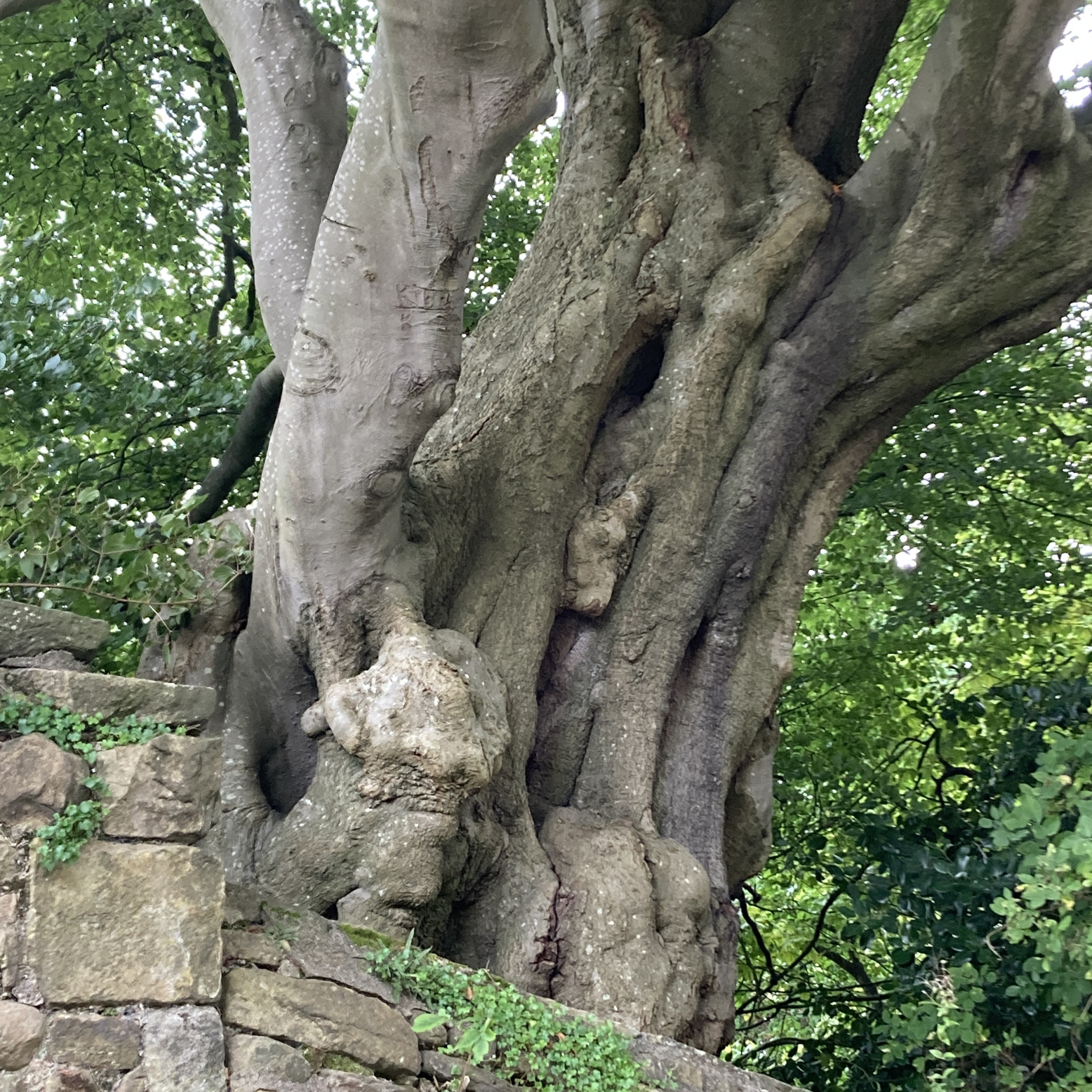What is 'Wellbeing'?
For our 3 sessions in September we have explore what wellbeing actually is and what we can do to help improve it. We looked at the 5 Ways to Wellbeing and how these might relate to nature:
- Connect – both with each other and with nature.
- Learn – with the natural world there is always something we don’t already know. Every day is a school day!
- Be Active – taking a walk in nature is a great way to do this.
- Give – both monetary, time and even some lazy ways to help support nature.
- Notice – really look at, listen to, and experience the natural world in all weathers and throughout the different seasons.
An introduction to mindfulness
Mindfulness can be a really beneficial way towards wellbeing because it can help us to connect, notice and learn – by being more present in each moment.
The image above was taken on our 17th September session, as part of our short walk. We noticed this beautiful beech tree growing behind the wall and that it was clearly old. But we also spotted the other plants growing out of the wall beneath it (including ivy-leaved toadflax), and a holly tree with unusually smooth leaves.
This, of course, led to the question ‘why are the leaves not spiky?’ Following some research, I discovered that the holly responds to predation by having leaves that are more spiky. This is intended to keep animals from munching the leaves – clearly in this high-up spot near the wall, there are no natural predators! But in other areas of town, where there are also no animals eating the holly, why are those leaves spiky? I suspect that us trimming our holly shrubs/hedges replicates the same sort of response (damage) in the plant as grazing by an animal, hence the spikier leaves.
Noticing, connecting and learning clearly came easily to us on this particular session, and I like to think it was because we were being mindfully aware of our natural surroundings.
Still to come...
If you’ve missed out on the September sessions of The Wellbeing Hour, but would like to come along, we will be running more in October, November and December. Details below:
- October – Positive changes in Autumn
- November – Bringing light into darker days
- December – Embracing the turning of the year.
For more details and to book, please go to the Events page on the website.

